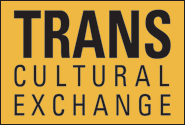Photo Credit: Catherine Lee
SELECTED STORIES FROM OUR CONFERENCES
More than one third of TransCultural Exchange’s Conferences note impressive tangible outcomes (such as invitations to residencies and exhibitions and/or successful grant applications) as a direct result of their attending the conference. Below are some of their stories.
For the 2022 International Conference on Opportunities in the Arts, members from the New York Art Circle came to Boston to attend. The video describes their experiences and immediate ‘successes’.
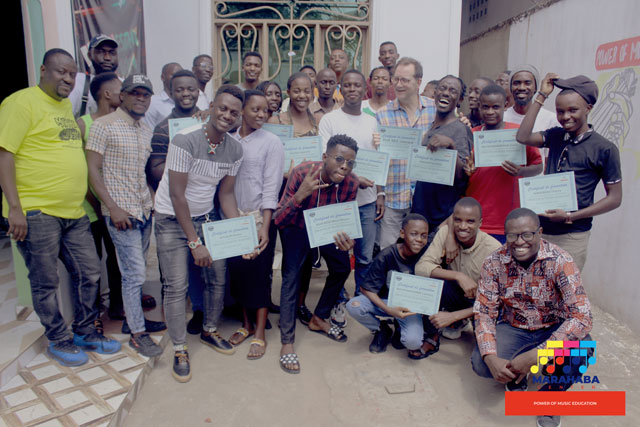
Through TransCultural Exchange, I was able to meet Shabani Ramadhani, musician and founder of Marahaba Music Expo in Burundi. As a result, I made my first trip to Africa to give clinics and a concert in Bujumbura. It was a life changing experience to celebrate our shared humanity through music in Burundi!
– Neil Leonard, 2022 Conference Moderator
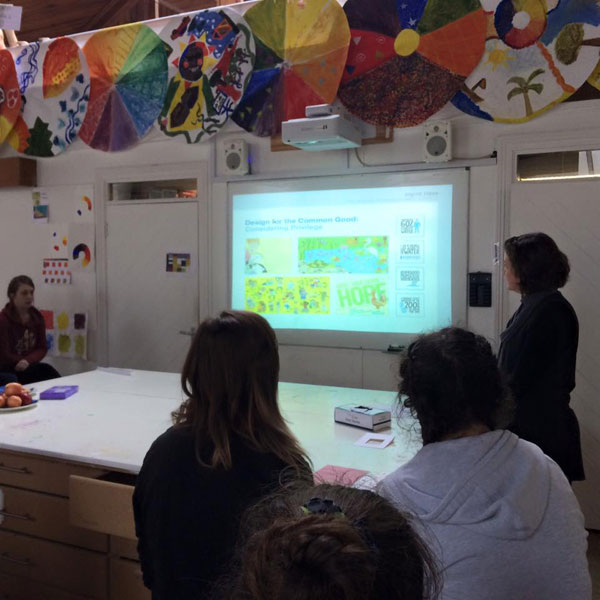
Photo Credit: Tania de Paor
In February 2016, I presented at the TransCultural Exchange Conference, Opportunities in the Arts, Expanding Worlds at Boston University. I chaired a round table discussion on Children and the Anthropocene. Prior to the conference, I was contacted by Professor Ingrid Hess, University of Massachusetts, Lowell who had read my profile and details of my proposed presentation on the conference website.
Our shared research interests included engaging children in contemporary global themes related to sustainability, the environment and social justice as well as using art and design to empower children.
Following our initial meeting in Boston during the TransCultural Exchange conference and a number of follow up meetings, we arranged that Ingrid would visit Ireland. Earlier this year Ingrid arrived in Ireland and we installed her beautiful and powerful exhibition, Cut Paper Creations: Using Design to Empower Children in MIC, University of Limerick. As part of the visit Ingrid met with my students and delivered two lectures, on designing for children and on the theme of Privilege. The exhibition and the lectures were very positively received by the students, faculty and the wider college community.
During the TransCultural Conference I had the opportunity to meet with artists, academics, curators and cultural practitioners from across the globe. Ingrid’s visit to Ireland demonstrates the exciting possibilities that can grow out of networking opportunities that a conference like the TransCultural Exchange promotes. These collaborations create the potential for future partnerships to develop to explore Irish/American perspectives on the power of art to open up arenas for encountering cultural, social and political art.
-Tanya de Paor, 2016 Conference Attendee
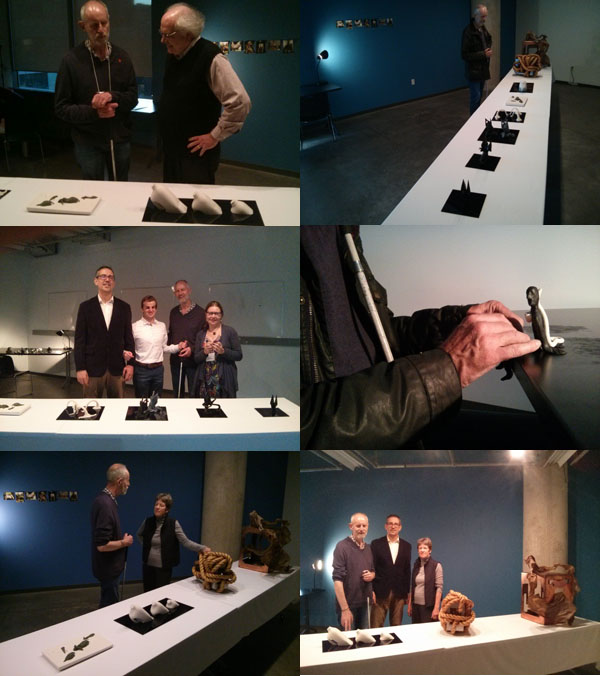
Photo Credit: Florian Grond
In October 2016, seven TransCultural Exchange Conference attendees (Florian Grond Rosalyn Driscoll, David Johnson, Piet Devos, Hannah Thompson, Vanessa Warne and Georgina Kleege) met again in Montreal for an exhibition Grond curated as part of the conference Engaging the Senses, International Visual Literacy Association at Concordia University. Entitled hands on! the exhibition consisted of sculptures designed for touching, made by the Massachusetts-based artist Driscoll, the blind English artist Johnson and by Grond and Johnson working collaboratively. This was the first time that the topic of disability and alternative ways of experiencing art were included as part of this conference series. At the same event, former TCE attendee Devos organized the panel entitled: The Distorting Mirror of Blindness: Visual Literacy and Non-Sighted Aesthetics. Thompson, Warne and Kleege (from the 2016 TCE panel Creations of the Beaten Path) joined the conversation with presentations on art and disability that, by proposing a radical multi-sensorial approach, productively challenged our preconceptions of artistic experiences and creations.

Photo Credit: Dorothea Fleiss
Your TransCultural Exchange Conference was brilliant, and I’m anticipating the next . . . The conference is so exactly in line with my aspirations as an artist, and I left with exciting possibilities and friends around the globe. At the last possible moment, as I was retrieving my postcards from the table, I met Dorothea — and the rest, they say, is history. I attended Dorothea Fleiss’ residency (DFEWA) in Romania this September and it was absolutely glorious. My studio was literally at the top of a castle turret!!! Dorothea was such an incredibly gracious, generous, and fun host, and both gave us amazing opportunities to experience a place I never imagined discovering, and fostered artistic opportunities to create and show in an intense flurry of work and final museum exhibitions. I have friends now in Kurdistan, Poland, Italy, Germany, and of course in Romania. The DFEWA residency really connected people, East and West, in such a warm spirit of cooperation, collaboration and friendship, and to return to before many years. I smile whenever I think of it, which is daily. I thought you would care to hear about one of the wonderful outcomes of your conference, and know its ripples continue: I am almost done with a work to send to Kurdistan to the Halabja Monument, and have other collaborations in the works with far-flung art friends. I am so very grateful for this memorable and nurturing experience. It nourished me as an artist, and as a human. TransCultural Exchange was the incubator for this, and I thank you!
– Coral Woodbury, 2016 Conference Attendee
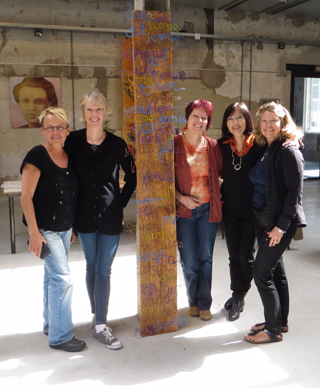
Photo Credit: Kim Alemian
Through connections I made at TransCultural Exchange in 2013, I was fortunate to be invited by Karmela Berg to show my work at Galerie bij de Boeken in The Netherlands with six other artists for an exhibition called EVEnt from May to July 2015. I was also invited to participate in the annual art fair Huntenkunst where I have been invited back to show in 2016. I made and exchanged art with several local artists who in turn asked us to participate in a large group show, for which I left behind a work. The exchange of ideas, visual language, and interpersonal connection was enriching.
We were housed with local families who were tremendously hospitable and generous. They opened their homes to us, giving us the keys, fed us, and arranged transportation. We enjoyed wonderful local cuisine and conversation around the dinner table. One of the artists helped us with transportation and opened her studio for us. It was enlightening to participate in discussions about their country’s history, geography, values, politics and arts.
Local newspapers wrote about the exhibition Women, and reproduced my work in a publication. We were interviewed and a video was made for a local broadcast. The Huntenkunst was opened by the US Culture Attache, the Director, Harry Schenning, and several other important speakers. I felt honored for this extraordinary experience which could not have happened without the connections made through the TransCultural Exchange.
—Kim Alemian, 2013 TransCultural Exchange Conference 2013 attendee
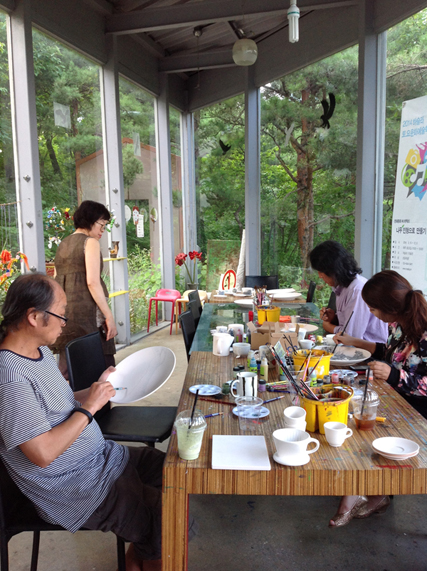
Photo Credit: Karen Fitzgerald
From July 14-30, 2014, I was an artist-in-residence at Haslla Art World just outside of Gangneung, South Korea. I met Professor Choi and Mrs. Park at the Trans-Cultural Exchange conference in Boston last October. They invited me to come to Haslla.
Being an artist-in-residence in a foreign country is an experience that produces a rich range of ideas, insights and new understandings. Haslla is a place where you are completely surrounded and suffused with art. It is everywhere on the grounds, in the buildings, within the people. Haslla has a gorgeous, commanding view of the Sea. Producing work at Haslla Art World gave me the opportunity to have a dialogue with myself stripped of the usual context and internal conversations engendered by one’s daily routines. What would I wish to create in a new place?
The time spent at Haslla was a gift of complete immersion in art making. The company of 5 other artists in residence at meals was always a welcome exchange. We did not often discuss politics. We sometimes discussed art matters and issues. Mostly, we discussed our cultures, our food, our experiences. We laughed and teased each other. Just like family.
-Karen Fitzgerald, 2013 Conference Attendee, www.FitzgeraldArt.com

Photo Credit: Ellie Schimelman
The TransCultural Exchange 2013 Conference was an opportunity for me to share my program in Ghana with many creative people. An unexpected surprise was an invitation from [a fellow speaker] Dorothea Fleiss to attend her international artists residency in Romania in January 2014. What a way to start the new year! This was a fascinating experience on many levels.
[It was] My first visit to Eastern Europe – a rare opportunity to do my own art work in the company of artists from all over the world and [to have] an exhibition in a castle in the Romanian town of Carei. Some artists get inspiration while sitting in their studios and others find it in traveling and experiencing new connections. If you’re one of the latter then I suggest attending the next TransCultural Exchange Conference where you can meet residency directors and, perhaps, be surprised as I was by being invited to join one. Mary Sherman and Dorothea Fleiss are very special, generous people who share so creatively. My thanks to both of them.
– Ellie Schimelman, Director of Cross Cultural Collaborative, Inc. and 2013 Conference Attendee
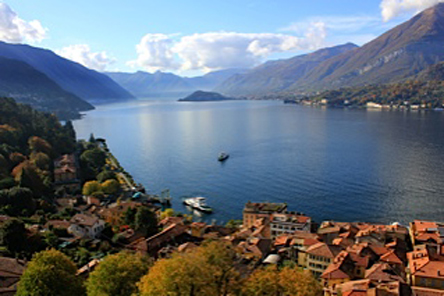
Photo Credit: Ian Koebner
The 2011 TransCultural Exchange Conference on International Opportunities in the Arts: The Interconnected World was the finest conference I have participated in for many years.
My primary function was as a panelist in the workshop entitled, “Integrating Art and Social Good.” The panel was moderated by the brilliant Doris Sommer, Director of Harvard’s Cultural Agents Initiative. I discussed my not-for-profit, Sacred Slam, and our flagship program YAWP: Youth @ War & Peace – a global platform for youth from conflict and post-conflict regions around the world to create art based on their experience and understanding of the great abstractions ‘war’ and ‘peace.’
Over the weekend I met inspired artists and residency directors from around the world. I not only laid the ground-work for dynamic collaborations with artists, academics, and curators to expand and engage with the YAWP collection, but also had unique access to resident directors and representatives that enabled me to refine my own search for a residency. As a direct result of participating in the TCE conference I secured two remarkable residencies – CAMAC – Centre D’Art – Marnay Art Centre, France, and the Rockefeller Foundation’s Bellagio Center in Bellagio, Italy. The inspired and focused time these residencies offered allowed me to formalize YAWP’s curriculum, and greatly increase the access and impact of our program. I am extremely grateful to the TCE for their work and hope to stay a partner for years to come.
– Ian Koebner, 2011 Conference Attendee
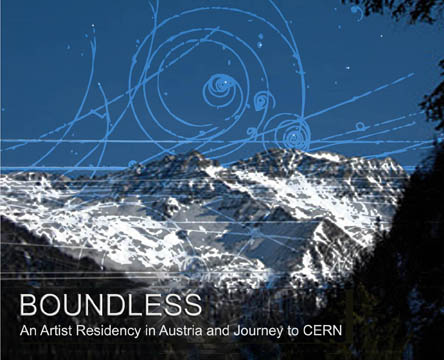
Photo Credit: Alicia Hunsicker
“After a wonderful experience with my first artist residency at the Vermont Studio Center in 2010, I became interested in participating in more residencies; and so I attended TransCultural Exchange’s 2011 Conference.
While there, connections were made to foster many opportunities, including meeting Dorothea Fleiss, Director of the Dorothea Fleiss East-West Artists Association. I was thrilled to be invited by the DFEWA to attend a residency and artist symposia this past October in Mallnitz, Austria. It was an amazing experience that will inspire me for years to come. I have posted a detailed account of my journey with photos here: Boundless: An Artist Residency and Journey to CERN.
I want to thank Mary Sherman for creating such a great conference program that helps artists make such meaningful connections and exhibition opportunities.” – Alicia Hunsicker, 2011 Conference Attendee
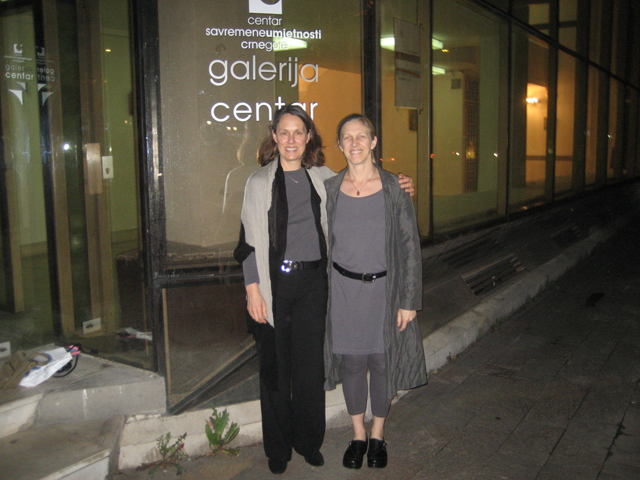
Photo Credit: Joyce Conlon
Through connections I had made via TransCultural Exchange, I was lucky enough to be invited by Dorothea Fleiss to attend the 11th Annual Symposium of Contemporary Art in Carei, Romania. That was in 2009. There, I made art and friends with 22 artists from 12 countries.
The symposium or residency took place on the archeological site of the Bronze Age village of Bobald, on the edge of Carei, in northwest Romania, near the Hungarian border. We were housed and fed; and we created in and around a chalet style building set among rolling farm fields. We worked the first day and toured the region the next, visiting historic sights and artists’ studios. We worked for two more days and then shuttled off to an exhibition of our work at the County Museum in Satu-Mare. The friendships I made as we worked by day, and dined and danced late into the evening spawned further invitations to France, Serbia, and Montenegro. Unable to leave work and family and commit full time to travel, I accepted one invitation to exhibit with another American artist in Ulcinj, Montenegro a year later. This led, in turn, to another opportunity to exhibit at the government-run Galerija Centar in the capitol city of Podgorica and another, in Berat, Albania.
In every case I felt honored in a way I have not experienced in the U.S. The openings were televised; and we were interviewed for broadcast and the press. In December 2012, Liz Marran and I will host five major Montenegrin artists in Boston where we will create prints together and exhibit them at U-Mass, Boston. There are no words to describe how extraordinary these experiences have been. Travel can be life-changing if one is open to learning. As an invited guest artist, I was given almost familial access to that cultural community. The exchange of ideas, visual language, and interpersonal connection makes the world a smaller and more inviting place.
– Joyce Conlon, 2011 Conference on International Opportunities in the Arts Attendee
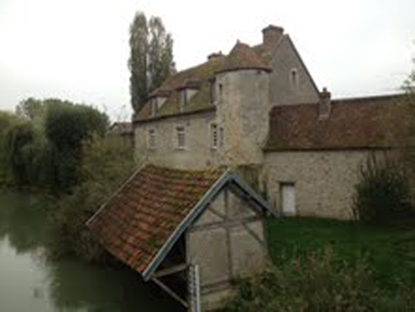
Photo credit: Laurie Krasny Brown
CAMAC is housed within an old stone priority building with its attached tower (my bathroom). I took over a spacious, high ceiling studio there, with my living space right next door. Outside the studio back door, the river Seine ran with force, changing color from greens, to grays, to browns. This is both a spare and spectacular site in which to make art. With an eye toward communal life, the residency serves dinner up during the week in a separate, newer building. I shared the time with six other residents, artists and writers, with homes in Chile, Peru, Slovenia, Algeria, Iceland and the USA. The opportunity to hear artists from so many places discuss their country’s history, geography, values, politics and arts is not easy to duplicate. It’s an obvious and almost effortless way to break down unnecessary barriers and instead build friendships among disparate people.
My work there both continued its course, like the river, and also diverted to include the village I inhabited. That is the distinct pleasure and challenge of working elsewhere; that is, the almost inescapable allure of what is fresh and noteworthy, nudged into artistic shape by your previous work methods and philosophy. There lies the magic. And so, along with the ongoing game boards and amusement park, there emerged on the worktable the geometric forest of trees, the farmyard, the bridge crossing the river, the occasional flock of geese flying overhead.. all still prepared in my favorite material, gouache painted paper.
Of course, the trick is returning home with a swelling imagination and clear enough focus to feed upon it.
-Laurie Krasny Brown, 2011 Conference on International Opportunities in the Arts attendee
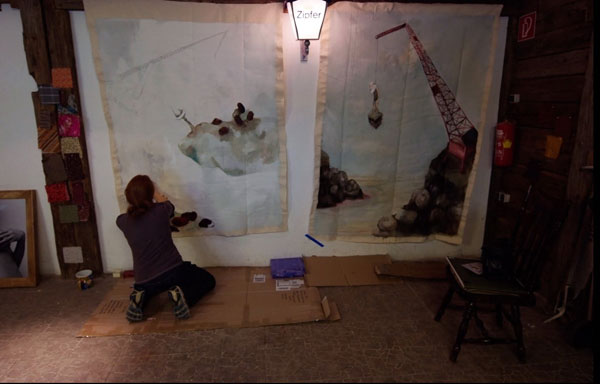
Heather Layton works in the studio at the DFEWA Residency in Mallnitz, Austria
The 2011 Transcultural Exchange Conference on International Opportunities was the single most exciting and productive art event that I have ever experienced. To my surprise, it did not consist of a series of lectures. Rather, it was a fully interactive conference structure that provided a limitless number of opportunities for artists to meet and exchange ideas with residency directors, museum curators, and other artists and arts professionals. As a result, I was invited to participate in two international residencies and three exhibitions.
Last October, I attended the D. Fleiss & East West Artists Residency (DFEWA) in Salzburg, Austria, with a group of artists from countries including China, Romania, France, Montenegro, Germany, and Poland. For almost two weeks, we lived and made art together in a private chalet with a large backyard studio in the middle of the Alps. This experience expanded my conception of collaboration: While we all worked on separate projects, there was a significant amount of momentum gained by our proximity and by the close relationships that we developed. At any given time, I could see ten other artists working and I could always ask them for feedback. Ms. Dorothea Fleiss orchestrated important career discussions during dinners and organized many outdoor adventures so that we could experience the local environment and culture. We drove to Italy for the Venice Biennale and, at the end of the residency, celebrated with a final group exhibition. In many ways, the experience was a reminder of why I make art.
Thanks to a wonderful mentoring session with Ms. Anne Laprade, the director of the Hampden Gallery, I will be having a two-person exhibition this March at the University of Massachussetts, Amherst. I will also travel to Samorin, Slovakia, for a one-month residency at the At Home Gallery after meeting Csaba and Suzanne Kiss. In addition, I had my work included in an exhibition in Potsdam, NY, that was curated by Amy Swartele, one of the artists that I met for dinner during the conference. I have also been invited to create a site-specific work at the Islip Art Museum after meeting Beth Giacummo, a museum curator, at the DFEWA residency in Austria.
Erase any ideas about conferences you have attended in the past. Mary Sherman has pioneered the new 21st century model.
-Heather Layton, 2011 Conference on International Opportunities in the Arts attendee
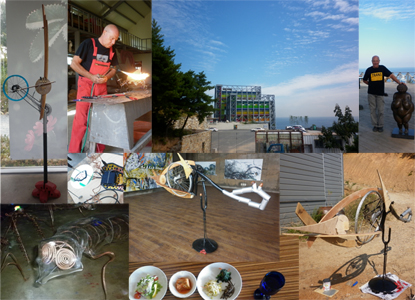
Haslla International Residency Program, September 19th – October 17th, 2011
The first time I came to Boston – for one of the Here, There and Everywhere projects – I had just missed the 2009 Conference [on International Opportunities in the Arts] by days; yet people were still talking about it with a kind of amazed appreciation. I remember wondering how could a – I supposed – boring gathering of “experts” be of help to any artist in search for “opportunities for art”? However, I was so deeply absorbed in my task that I didn’t think more about it: I also was experiencing a parallel reality at the Nexus Machine Shop and Gallery – a famous machine shop in South Boston – held together by a pool of engineers engaged in many projects. The atmosphere was creatively stimulating; and the people were both simply genial and – like Einstein – some kind of geniuses: You could end up at breakfast with people from the M.I.T talking about some future app; while, at the same time, studying the best way to cook pancakes without a frying pan, amidst puzzled looking cats, books and obsolete computer parts – all in a not so American Housewife-like tidy kitchen.
Then, this year, I arrived in time to follow that very complex event that was TransCultural Exchange’s 2011 Conference on International Opportunities in the Arts.
Then I understood what it was all about: Imagine a three day rush when you could just try to follow the maximum number of events you can grab – knowing that you will then have to synthesize them for, say, months ahead. A well- organized, yet apparently chaotic sequence of panels, discussions and presentations of everything that rounds around that one obsessive theme: Art. I could also follow that interesting -and very Anglo-Saxon styled – gathering of bright brains that is the Portfolio Reviews, where artists present their work directly to the people that are mostly supposed to be interested in it, for instance, a Director of a Museum in Austria or the organizer of a Symposium in Germany, the President of a Grant Foundation in Australia or the Director of a Biennale in Saudi Arabia.
I can only say that it works: I’m writing this note from Korea, from the International Residency Program at the Haslla Art World Museum, an ” international opportunity in the arts” come true, thanks to TransCultural Exchange’s Conference.
–Rudi Punzo, 2011 Conference on International Opportunities in the Arts attendee

Artists’ residency program, Arthouse Garana. Garana-Wolfsberg, Romania.
I had volunteered to run the AV systems at the past two TransCultural Exchange Conferences on International Opportunities in the Arts. At the 2011 Conference I had the good fortune of meeting Elisabeth Ochsenfeld, organizer of the Arthouse Garna residency program, which I participated in this July.
Arthouse Garana is in a tiny, one and a half street village in the mountains of western Romania. The program was only ten days long, but they are ten days that will remain with me for the rest of my life. It was so great to interact with artists from around the world, to see how they saw the world and what their art meant to them. For me, as a somewhat younger artist at the beginning of my career, it was also very informative and inspiring to be around artists at all stages of their careers. The group was very warm and inclusive, and despite some difficulties with languages we all managed to form some form of bond with each other.
Perhaps the best part of the whole thing was just the fact that every day during the residency all I had to do was get out of bed, go and eat some breakfast and talk to my new friends, and then go paint. In my regular life I have all these other distractions and responsibilities; it can be hard to maintain that daily regiment of artistic creation that is so important to making progress. At Arthouse Garana we were provided with three delicious meals a day, plus wine at dinner (and sometimes lunch!). We had comfortable sleeping arrangements and a key to a nicely equipped studio. I was a little disappointed when I realized the only canvases available were smaller than I had become accustom to working on, but even that turned out to be a blessing in that it forced me to try new things. Since I’ve gotten back I have continued to work with multiple panels and to primarily paint on horizontal surfaces instead of on an easel. These are both things I probably wouldn’t have ever tried if it hadn’t been for the residency.
–Blake Brasher, 2011 Conference on International Opportunities in the Arts attendee
From the 2009 Conference
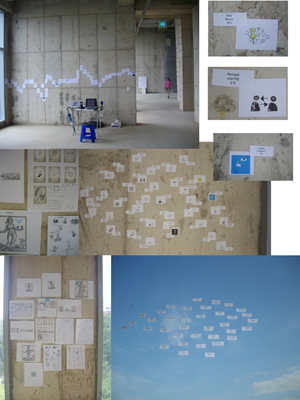
Haslla, Gangneung, South Korea Photo by Jeanne Landry-Belleau
In my case, TransCultural Exchange is a path towards creations, contexts and new exchanges.
When I participated the 2009 Conference, I was doing my masters in fine art. By coming to the Conference, I had these intentions: Talking about numerous residencies in Quebec City and looking for art residencies opportunities in Asia. Finally, it came beyond my imagination.
I discovered resources and found open doors to creation contexts that I never imagine before. During the 2009 conference, I attended several panels. The Haslla art World presentation touched me in a specific way. This organization seemed closely related to my art vision. During the conference, I started thinking about going there. Then, I introduced myself and my work to Ms. Park and Ms. Yun. A few months later, I went to South Korea to present and share my work during the Haslla International Arts Symposium.
I participated in the Haslla Symposium and stayed with Haslla’s team for an almost two weeks residency. That was perfect to work on my master thesis project: “Web Iconologia : a humanism iconologia for the Web” (www.iconologia.net). In many ways, it was so nurturing. My art work (Web Iconologia) became stronger and more engaged
Also, I set my mind to contribute in opening new collaborations between Asian art organizations (Korea and Japan). During my stay in Korea, I visited a lot of Seoul’s art centres and looked for residency programmes.
Then, I came to Japan and explored the possibility of creating exchange programme between artists run centre (in Québec and Japan). Things came along well. I visited and met members of AIT (Art Initiative in Tokyo), a dynamic run artists centre, based in Tokyo.
Later, I stayed one month in Osaka. There, I have been invited to ift to organize an event in collaboration with the sound artist Mamoru Okuno. Ift room project is an artist run centre in Osaka. Originally, it was an old and almost broken house (100 years). In 2008, ift’s members undertook renovations to generate an independent creation space based one these tree values : Lift, Shift and Gift.
Back to Quebec city, I shared my experience with others artists and I contributed to create residencies programmes between TWS (Tokyo Wonder Site) and la CHAMBRE BLANCHE, an artists run centre in Québec.
This is just to resume how TransCultural Exchange has been the ” tipping point ” in all that story.
– Jeanne Landry-Belleau, 2009 Conference on International Opportunities in the Arts attendee
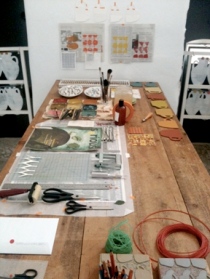
Apothiki, Greece Photo by Laurie Krasny Brown
Attending the 2009 Transcultural Exchange Conference was an eye opening, mind expanding experience for me. As one consequence, I pursued application with the founder of Apothiki Art Center on the Cycladic Greek island Paros and was invited to spend six weeks there this past summer into fall. Also, I submitted application for a travel grant from the Lighton International Artist Exchange Program, part of the Kansas City Artist Coalition, another presenter at the Conference. That grant certainly helped offset the expense of getting there and back!
What stands out the most for me about this experience is [my]personal growth as an artist. To take on such a residency is like a test of yourself. I was totally on my own to absorb this new place and see how it turned up in my creative work. Being in unfamiliar terrain has a way of heightening your sensitivity to the sights and sounds around you – part of the pleasure and learning that comes with travel.
I did prepare a body of work during my stay that was relevant and that resonated with my surroundings. This was partly planned ahead and partly spontaneous. The theme if you will was to honor Apothiki’s history as a storage place for precious things, e.g. olive oil, wine. I prepared in advance a series of lithograph monoprints showing forms of ancient Greek amphorae (after research at the Metropolitan Museum of Art, etc.), intending to enhance them with collage elements once on Paros. I also carved several linoleum blocks for printing both ancient and modern drinking cups.
Once on the island, I delighted in discovering items devoted to the storage of not so precious things. Beauty and whimsy is there to be noticed in unlikely everyday objects. This is another of the pleasures of living somewhere different. And so added to my agenda came the scrounging around for certain common place materials to work with, arousing curiosity, even suspicion among passersby and shopkeepers.
The solo exhibition of this work at Apothiki opened 28 September with an evening reception. I held gallery hours through 2 October in the mornings and again in the evenings. It was a thrill! The passion and focus with which I pursued this project sometimes surprised and amused me. There was a reach beyond the more predictable aesthetic menu I recognized in my work. Seeing that I could in fact produce some satisfying new work, bring humor to the table, solve problems as they arose, mount the show on time AND still savor my free time… has made me feel more confident.
– Laurie Krasny Brown, 2009 Conference on International Opportunities in the Arts attendee

Boston, Massachusetts Photo by Dimitris Ameladiotis
During my stay in Boston I was surprised to learn of a house underground, famously known as the Nexus Machine Shop and Gallery. For me, this underground house was a chaotic museum of technology, full of wondrous machines for making things, including the standard table saw, lathe and drill press. The wealth of materials and mess of the space inspired me to make a series of work from the objects around me. Created organically from both the space and my fingers, I produced and composed these works by way of intuition and arbitrariness. During this very interesting experience, I had the occasion to think a lot about how many various objects might be put together to create endless abstract histories. Later, I wondered how much the physicality of an artwork relies on its ready-made objects and materials. How many syntheses of the materials may have previously existed? How a person could manage to be happy via the touching (feeling) of the objects? How much does the gestures (the hands’ movements, manipulation) and the visual perception of one person determine the aesthetics of the objects? – Dimitris Ameladiotis (Greece), 2009 Conference on International Opportunities in the Arts attendee
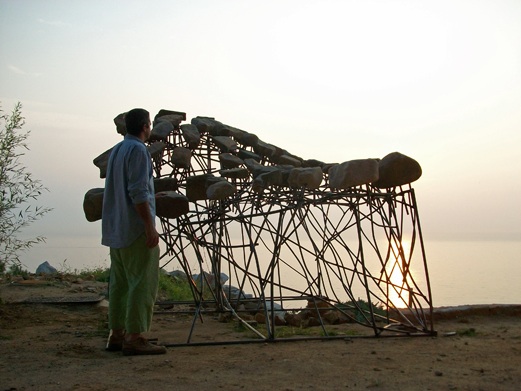
Haslla Museum Sculpture Symposium Photo by Karl Saliter
I signed up for TransCultural Exchange’s 2009 Conference on International Opportunities in the Arts in 2008, hoping to make some contacts to travel to Asia, where I believed my work in uncut stones was a good aesthetic fit. Being invited to attend the Haslla Museum Sculpture Symposium at my mentoring session in Boston was a welcome surprise. Now, having enjoyed the symposium and a brief residency in this amazing museum overlooking the ocean, with a series of five star meals and Haslla buying all my materials, I am far beyond grateful that I decided to attend TCE[‘s Conference]. I will certainly go again. – Karl Saliter, 2009 Conference on International Opportunities in the Arts attendee
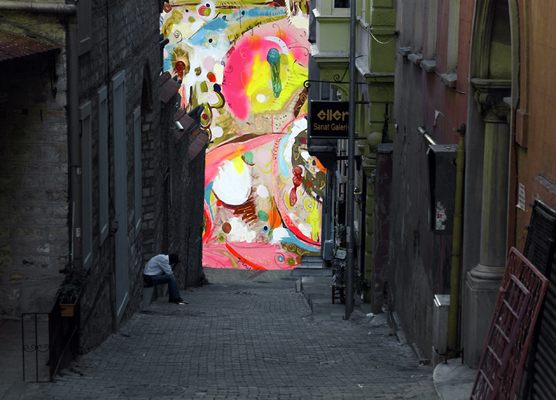
“Urban Themes, Western/Eastern Cities,” a collaborative work by Walter (Rusty) Crump (US) and Gulay Alpay (Turkey)
I was quite honored to be chosen to be one of the participating artists of the TransCultural Exchange exhibition Here, There and Everywhere. I worked with a Turkish painter Gulay Aplay. I had met Gulay briefly on a recent trip to Istanbul (at the suggestion of TransCultural Exchange’s director Mary Sherman). We hit it off immediately; and I was very impressed with her work. Her painting is loose and free, uninhibited – where my photography is more structured and controlled. We both felt that because of the “polar differences” in our work and our different cultural backgrounds that a collaboration could produce interesting results; and, in the process, we’d have to deal with work that is so different from our own aesthetic. We looked forward to being challenged in interesting and unexpected ways. We were both pleased with the results that came out of our partnership – so much so that we hope to exhibit our work In Istanbul in 2010. Had Gulay and I not participated as partners in Here, There and Everywhere we would have remained friends, but probably not [have] worked together. Now that we have, we are now investigating future venues to show our collaborative work. I have always found that taking new and unexpected challenges results in expanding your horizons. – Walter Crump, 2009 Conference on International Opportunities in the Arts attendee
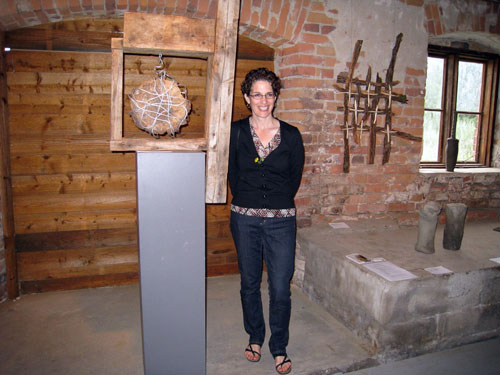
Hovinkartano Art Centre Symposium, Finland
I was an original participant in the TransCultural Exchange’s Tile Project, Destination: The World, an international tile project, promoting “collaborations between a diverse group of international artists, their communities, non-profit art institutions and the educational sector at a grass roots level.” Though this project and, later, through the International Opportunities in the Arts Conferences (2007 and 2009), I connected with international artists. These contacts have led to several career expanding opportunities: Hovinkartano Art Centre Symposium – I was invited to participate in an international art symposium (group artists’ residency) at Hovinkartano Art Centre in Hovinkartano, Hauho, Finland in July 2008. The invitation came from Pirjo Heino, a printmaker and curator at Hovinkartano Art Centre. Pirjo and I met originally met through our mutual involvement in The Tile Project, and then reconnected at the 2007 Conference on International Opportunities in the Arts in Boston, where she was a presenter. My art work was shown in an international group exhibition at the Hovinkartano Art Center at the end of the symposium and later in another show at the Ripustus Gallery in Hamenlinna, Finland. Waterfall — An international collaborative exhibition, installation, and performance with Israeli artist, Karmela Berg (film maker) and Finnish artist, Pirjo Heino (printmaker), at the Nave Gallery in Somerville, MA. Waterfall grew out of an initiative of the TransCultural Exchange’s world-wide project entitled Here, There and Everywhere: Anticipating the Art of the Future. I contacted the international artists, whom I had previously met through TCE to collaborate on this project. As a result of the exhibition, the Nave Gallery (where the show was presented) sold several photos, raising money for WaterAid America. The show, which was coordinated to open with the 2009 Conference on International Opportunities in the Arts in Boston, gained international exposure for the Nave Gallery in Somerville, MA. In September 2009, I will be going to Croatia for another artist symposium — International Artist Symposium, Croatia — an invitation which grew directly from friendships made during the Hovinkartano Art Centre Symposium in Finland last summer. The symposium will also result in an international exhibition in Croatia. – Ellen Schön, 2007 and 2009 Conference on International Opportunities in the Arts attendee
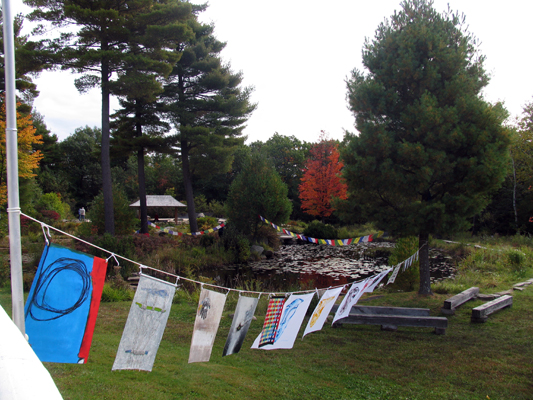
“Prayer Flags around the World,” a collaborative project by Thomas Matsuda
TransCultural Exchange sponsored my trip to Romania to attend the D. Fleiss East-West Artists Symposium in 2006. There, I met Mary Sherman and many artists from around the world. It was very inspiring and led to many new projects, including the Prayer Flags Around the World for TransCultural Exchange’s world-wide project Here, There and Everywhere: Anticipating the Art of the Future. For that work, I invited international artists I met in Romania and from other projects to create art flags for peace. It has since traveled to many venues in the US, Germany, Romania, Netherlands, France, and next to Switzerland and Austria, and more artists continue to join and exhibit. I also met an artist-curator at the Romania residency who invited me for the first International Art Book Symposium held in Cairo Atelier in December 2008. Then I was invited to Qatar by the same artist-curator for a four-person inaugural exhibition for the Qatar Visual Art Center in Dhoa, Qatar. At the 2009 TransCultual Exchange Conference, I met with Taylor Van Horn. He suggested my work would be appropriate for the Pedvale Open-Air Art Museum in Latvia. I contacted the director and on a grant from the US Embassy, I was invited in 2011 to create a granite sculpture installation. I was invited back in 2012 to make a wood and fire sculpture installation collaborating with a dance and music troupe for an amazing sculpture/performance event on midsummer night. I have met artists from around the world with whom I still keep in touch and collaborate. All of this can be traced back to TransCultural Exchange and Mary Sherman. I am sure many more projects will continue to unfold. -Thomas Matsuda, 2007 and 2009 Conference on International Opportunities in the Arts attendee
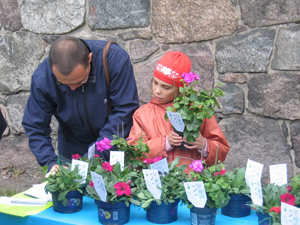
“Paradise re-made” a collaborative work by Roberley Bell Photo by Roberley Bell
Paradise re-made is both a sculpture and a participatory artwork that becomes a field, spreading out across the city of Kaliningrad like a landscape. It moves away from the object crafted by the artist and becomes whole only through the desire of the participants. The windows of the abandoned tower are adorned with blooming flower pots. In the yard of the tower the audience is invited to take home a plant from a table of flowering plants and is asked to document its growth/bloom over the summer months, sharing this via the web. Paradise re-made merges the historic site, artwork and audience participation into a shared public performance. – Roberley Bell (Russia), 2009 Conference on International Opportunities in the Arts attendee
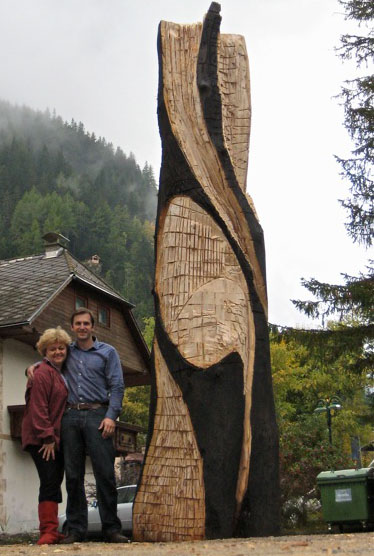
Dorothea Fleiss and Shane Stratton with “Tamra”, fir wood with stain, 15′ x 4′ x 4′ East West Artist Symposium in Mallnitz, Austria (and the upcoming Artist Residency at the University of KwaZulu-Natal in South Africa and the Fulbright Scholar Grant for research in Istanbul, Turkey) Photo by Julia Stratton
I came to the 2009 Conference on International Opportunities in the Arts hoping to find a means to make sculpture overseas. In one of the many informative presentations I attended, Dorothea Fleiss spoke warmly about her self-made Romanian residency in the countryside. I was very attracted to the diverse and generous type of working environment she described. We had the chance to speak one-on-one during the mentoring session, at which time Dorothea invited me to another conference she was organizing specifically for sculptors to create large, carved, wooden sculptures for the Hohe Tauren National Park in Mallnitz, Austria. In October 2009, I made a fifteen-foot piece, my first sculpture in wood. In addition to getting to know the incredibly energetic and positive artist and organizer, Dorothea, I met a wonderful group of people during the ten-day symposium that included sculptors from Slovakia, Spain, Romania, Austria and Italy. These relationships led to more artist opportunities for 2011, including an invitation to create a monumental sculpture for a new national sculpture park in Slovakia and to be an artist-in-residence at Circulo de Arte in Toledo, Spain. The 2009 Conference also directly led to two other upcoming opportunities: a two-month artist residency at the University of KwaZulu-Natal in Pietermaritzburg, South Africa, beginning in July 2010, and a Fulbright Scholar Grant for nine months of research in Istanbul, Turkey, beginning in September 2010. After hearing Juliet Armstrong speak about the residency program at KwaZulu Natal, I scheduled a mentoring session with her where I was able to present my work and speak with her further about the residency in South Africa. I later applied to the program and was accepted. I have never been to Africa before and, as the date of the residency approaches, I am very excited about this opportunity to make sculpture on the other side of the world. While I have long dreamed of a Fulbright Scholar Grant, it was at the the Conference that my application proposal began to come together. I attended Dr. Ilgim Veryeri-Alaca’s presentation on Residency/Exhibition/Teaching Possibilities Associated with Universities in Turkey, and I had a mentoring session with her where I explained my desire to research the Islamic abstraction of nature and make sculpture in response to this research in Istanbul. She was later extremely helpful in connecting me to universities in Istanbul that provided letters of invitation for my Fulbright application. I also had the opportunity to hear David Adams speak about the Fulbright Program in his Conference presentation and speak to him personally about the countries I was considering. That conversation confirmed my interest in applying to Turkey and provided me with the outline of my application. – Shane Stratton, 2009 Conference on International Opportunities in the Arts attendee
From the 2007 Conference
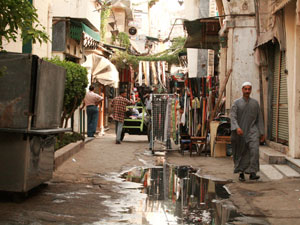
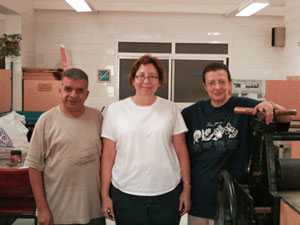
Alexandria, Egypt Photos by Susan Paszkiewicz-Toler
“At the Boston conference in the spring of 2007, I learned of an artist residency opportunity in Egypt. In October, I flew to Cairo for a month-long residency with an excellent artist who does fine papermaking, painting, and printing. It was spectacular. My studio was located in Old Islamic Cairo. Every day I walked past many historical religious sites, sometimes stopping to explore them. Across from my studio was a sculpture studio. It was great to see the work there and to talk with other artists. An Egyptian artist I met invited me to visit her studio too. We are discussing a possible joint show in Egypt, and then perhaps in the United States. My residency included a five-day workshop in Alexandria, where I studied with a professor who was a design consultant for the new Alexandria Library. In Alexandria, I met artists from around the globe who were attending an international workshop. A Web designer from Nigeria and I now e-mail regularly, sharing images of our work. I’m returning to Egypt in April 2008 for another residency and the opportunity to connect with other cultures and artists.” – Susan Paszkiewicz-Toler, 2007 Conference on International Opportunities in the Arts attendee
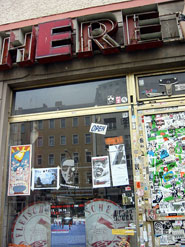
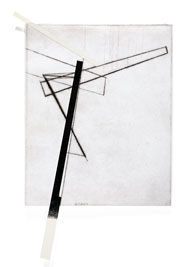
Berlin and Reykjavik Photos and Print by Lara Loutel
“I was assigned to (the Bridge Guard Residence Art/Science Center founders) Hanneke and Karol Frühauf for the portfolio review at the 2007 Conference. They were interested in reproducing one of my pieces in a limited edition screenprint. Between the Frühaufs and the TransCultural Exchange it was financially possible for me to meet the Frühaufs in Zurich to sign and number the edition, and also spend time in Berlin and Reykjavik. I also met two artists in Berlin who have worked with TransCultural Exchange and the Frühaufs suggested I meet with one of the artists who had worked at their residency. I remain in contact with all of these people as well as other artists who I met. The 2007 Conference directly led to a greater exposure of my work through the Frühaufs’ edition, a chance to travel, and many foreign artist contacts which will make future foreign activities much more likely to occur.” – Lara Loutel, 2007 Conference on International Opportunities in the Arts attendee
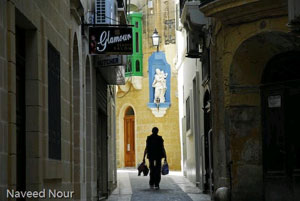
Gozo, Malta Photo by Naveed Nour
“Not knowing something is one problem; but not knowing what we don’t know is a bigger problem. Once I figure out what I don’t know, my life becomes much easier, because then I can learn. Based on my research, that was exactly why I decided to participate in the 2007 TransCultural Exchange Conference, with the hope of meeting peers from around the world who would open my eyes to new paths and ideas. My reasoning paid off in ways I would never have imagined possible. The conference was an opportunity for me to capitalize on, and so I did. The format was extremely friendly and accessible, with great international participants who were there to share their knowledge. I met artists, curators and educators from all over the world; and as a result I was rewarded with an invitation by Gozo Contemporary in Malta to participate in a week long artist residency program. Subsequently I also received a stipend from TransCultural Exchange towards this program, which is helping me to complete my project. The result of my travel to Malta is an art collaboration with Norbert Attard, a great international artist from Malta and founder of Gozo Contemporary. I have created and now maintain relationships with other TransCultural participants, which will turn into future collaborations. Last but not least, my networking with guests at the last dinner of the event has led to my collaboration with the Massachusetts College of Arts for whom I have designed and will teach a new course. For sure this won’t be the end of my experience and I can’t hardly wait for the next chapter of TransCultural Exchange in 2009. To learn about the Malta Project, please visit http://www.naveednour.com/mltproject.html. For more information about me please visit: www.naveednour.com | www.photoemerge.com | www.historyrecalls.org” – Naveed Nour, 2007 Conference on International Opportunities in the Arts attendee
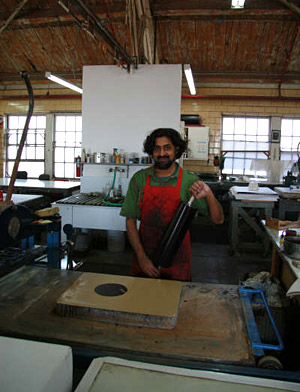
Berkeley, California Photo courtesy Jitendra Baoni
“Attaining Kala Residency was a dream fulfilled. I met international contemporary artists and got an opportunity to enhance and share knowledge. After reaching Kala Art, Berkeley, I got that what I dreamt of. The working atmosphere was extremely friendly with all the possibilities of equipment and facilities. The best part was twenty four hour studio access. I chose to do lithography in Kala. I am fascinated with lithography and its technique as the results are unique. Kala often had exciting programs in the evening, so I could meet art educators and artists from different countries who visited there. At the end of my Kala AIR residency the Kala community decided to keep my talk about the work which I did during my residency. That was very exciting thing for me as I could discuss about my work with the artist community. After my talk an art lover bought one of my litho works for her collection. Experiencing artistic life globally was like a lifetime experience.”
– Jitendra Baoni, 2007 Conference on International Opportunities in the Arts attendee
http://jitendrabaoni.blogspot.com/2008/04/my-experience-as-kala-air-berkeley-sf.html
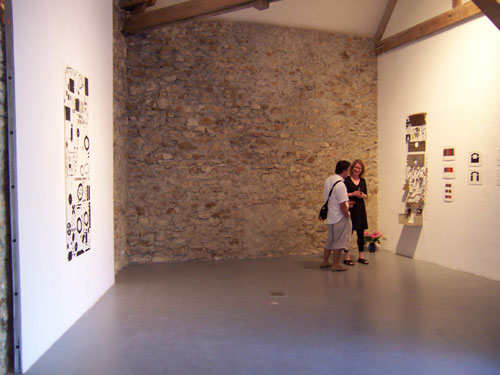
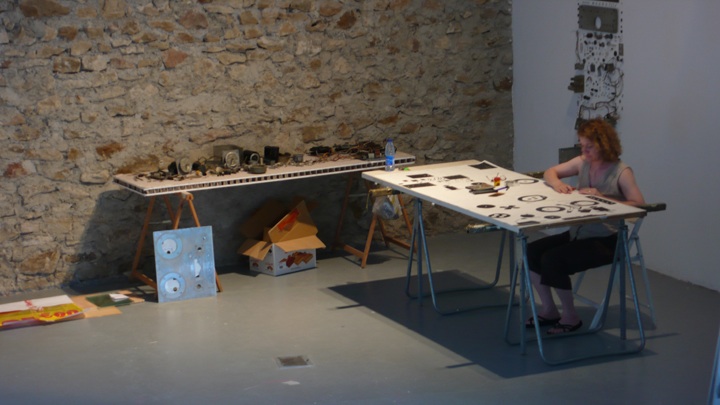
Marnay-sur-Seine, France Photos by Edythe Wright, Julieve Jubin and Alejandro Ferriero
“My residency and exhibition at CAMAC, in Marnay-sur-Seine, France came about directly from my participation in the 2007 TransCultural Exchange Conference. I signed on early and was paired with the director of CAMAC for a portfolio review, which resulted in an invitation to reside at the center and produce an exhibition. Marnay is a beautiful little village about 1.25 hours southeast of Paris by train. My month-long stay was a tremendously productive and edifying experience. I made some very good friends among the international group of artists who were my fellow residents and enjoyed feeling like a part of village life, while also visiting Paris and Amsterdam briefly. I produced a strong, new body of work for an exhibition at the end of my stay, the opening of which was one of the best times I have ever had.” – Edythe F. Wright, 2007 Conference on International Opportunities in the Arts attendee
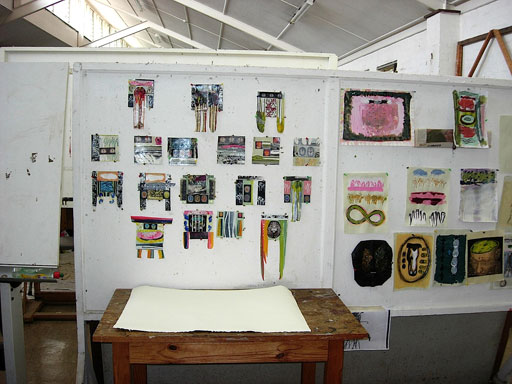
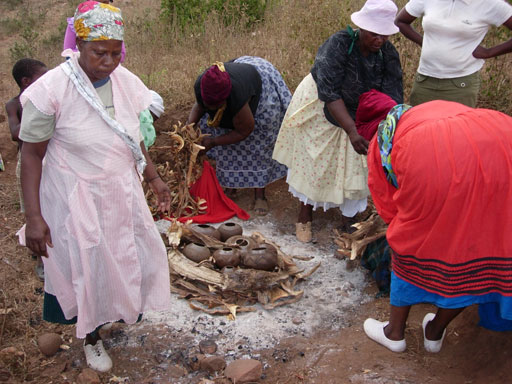
Pietermaritzburg, South Africa Photos by Elizabeth Geissler
“At the TransCultural Exchange Conference’s in Boston 2007 I was invited to be part of the Residency project at the University KwaZulu-Natal in Pietermaritzburg, South Africa. This was for me an extraordinary experience. Beyond the challenges and benefits of placing oneself in a distant and unique environment it was filled with that most special of all elements; the time and space dedicated to making one’s work. The project I was involved with the UKZ-N program offered me an environment with opportunities and experiences that have infiltrated both my art work and my thinking and understanding of and connection with the cultures and peoples of Central and Southeastern coastal South Africa. I worked in my studio alongside the Faculty and Grad/Post Grad students in the Center for Visual Arts, allowing their mindsets and creative intentions to inform me. At the same time I was able to ‘teach by experience’ and was asked to give a workshop in ‘The Altered Photo’. I met indigenous artists exhibiting internationally and am involved in a four way collaboration with three of the UKZ-N Faculty in the upcoming TransCultural Exchange Project Here,There and Everywhere. My visit culminated in a one person show in the CVA’s Jack Heath Gallery and as a result my work is now in a collection in South Africa and with an American collector who was there as well. The connections I made were gratifying and unforgettable. I gratefully look forward to the upcoming venue for the International Collaboration as an extension of the opportunities initiated by the 2007 Conference.” – Elizabeth Geissler, 2007 Conference on International Opportunities in the Arts attendee
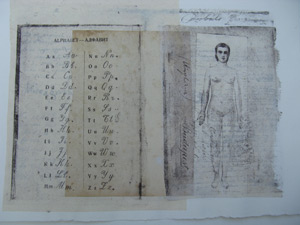
Debrecen, Hungary Image by Jessica Ferguson
My time in Debrecen (at the Third International Artist Colony of Debrecen) last summer was absolutely MARVELOUS! Very productive in terms of making work, in terms of networking with artists from several countries (as well as Hungary), in terms of seeing and experiencing a country I had long dreamed of visiting, but had never been able to. I started out in Budapest, staying for 5 nights with Hungarian colleagues of my in-laws, visiting flea markets and old book shops in search of materials. In Debrecen, I was able to find another flea market (thanks to one of the artists there) and also was loaned a wonderful book to photograph and/or Xerox. As it turned out, my pinhole camera did not function (unforeseen problems with the Polaroid back), so I ended up working in collage and printmaking (gum Arabic transfer method using a mirror-imaged Xerox). This technique proved intriguing to other artists, so I taught it to a number of people, some of whom began to use it right away! (I have also incorporated it into my teaching here in Boston. I even gave one demo in German, my common language with a Hungarian pinhole photographer I met thanks to the kindness of one of the other artist participants.
I met wonderful people – whom I hope to stay in touch with and hope to see again – whether here or back in Hungary (or Slovakia, or Poland or Spain
There will be a catalogue of the work/artists at the 2008 Debrecen colony by the end of the year – I really look forward to seeing it. I am sure it will provide a wonderful way to re-live this highly productive and inspiring experience of spending 18 days in Debrecen, in the company of other artists.
– Jessica Ferguson, 2007 Conference on International Opportunities in the Arts attendee
